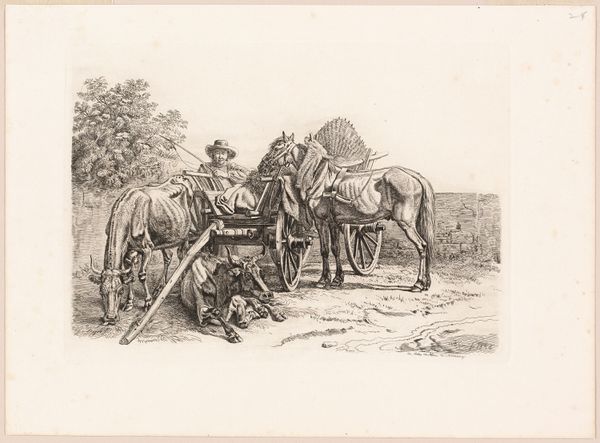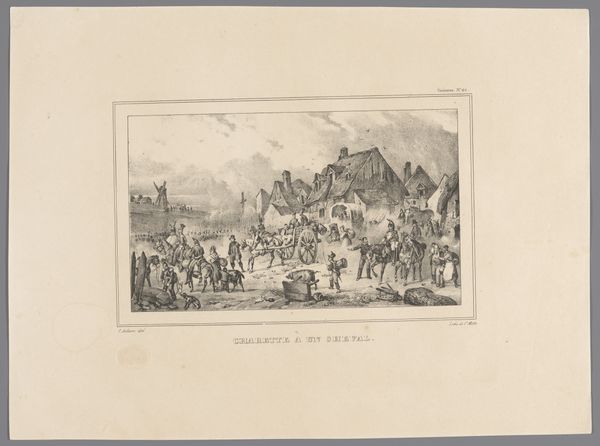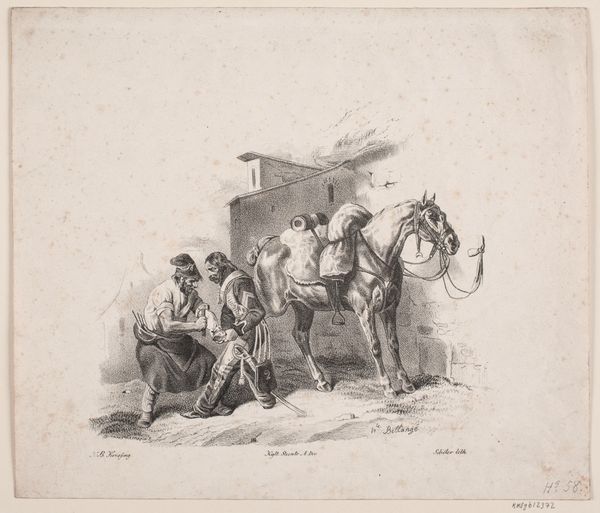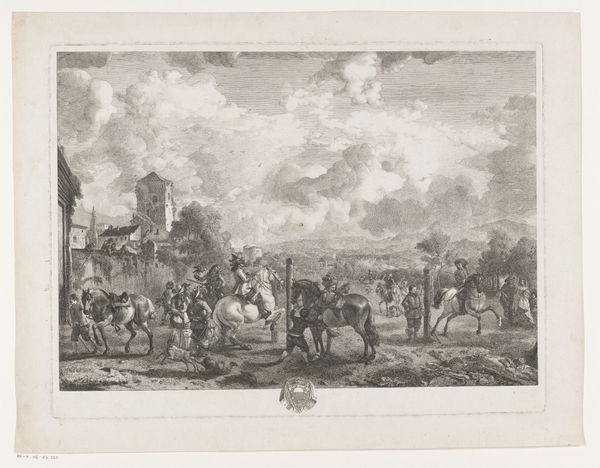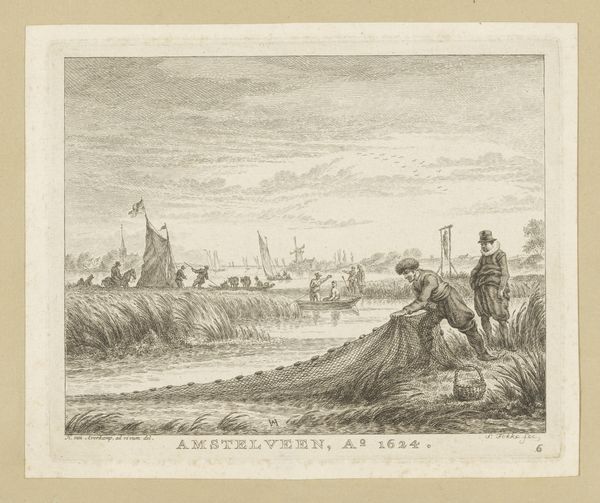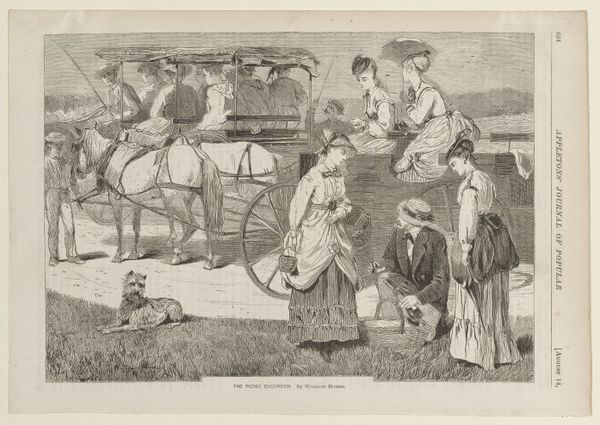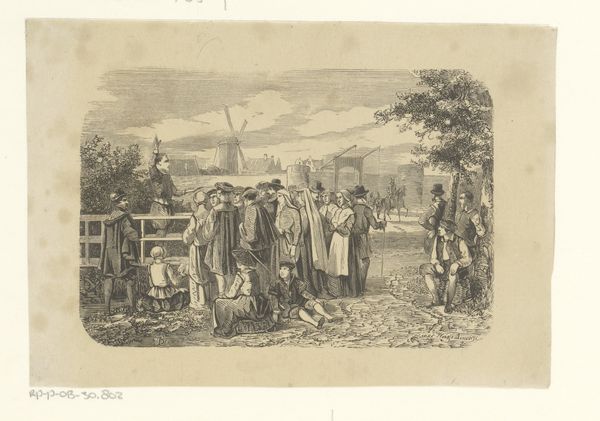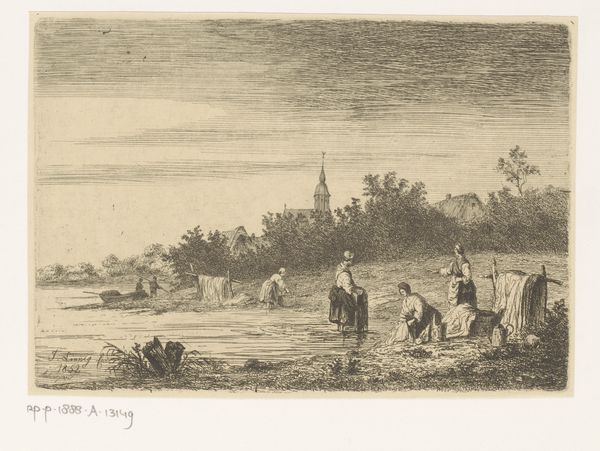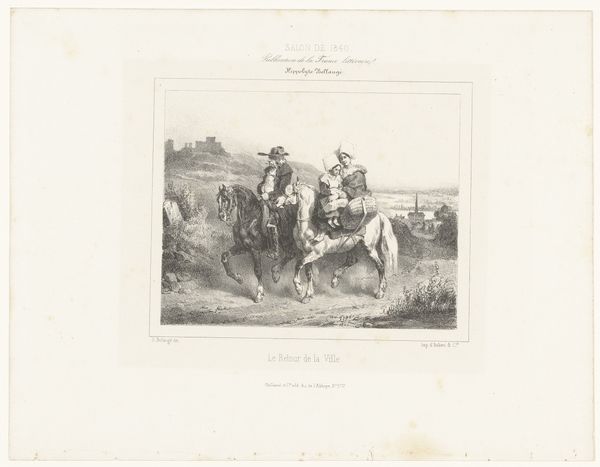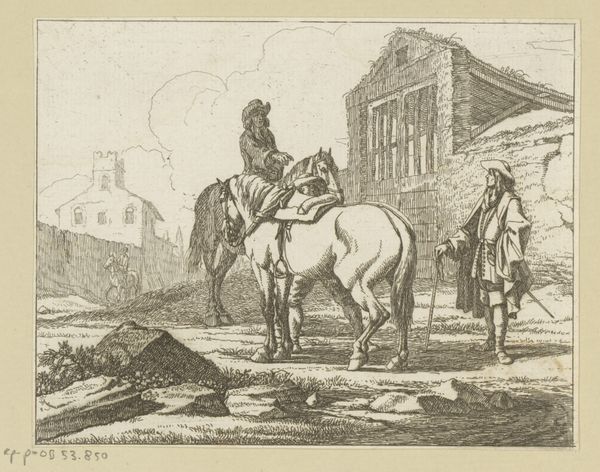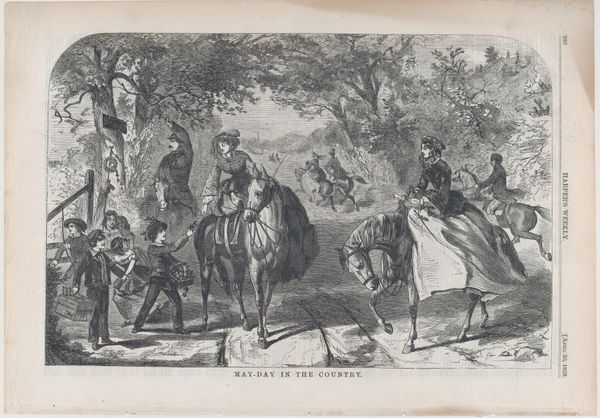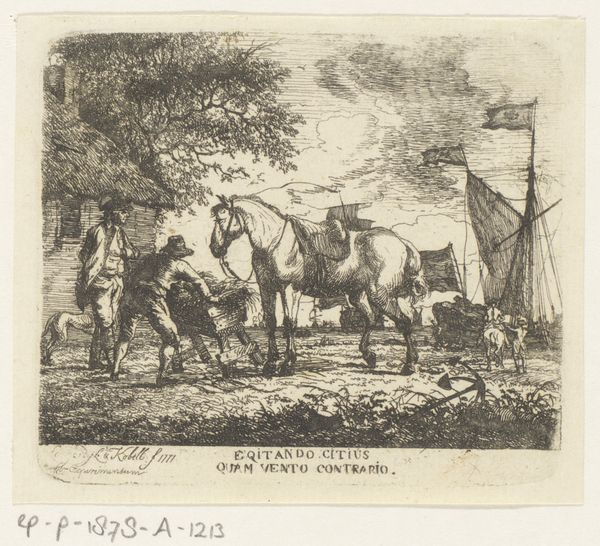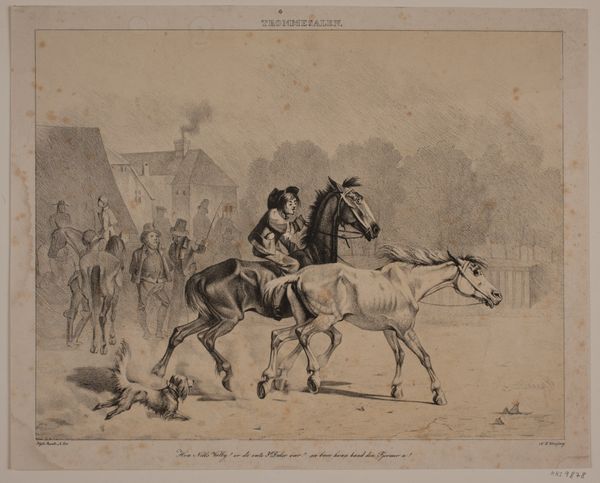
Bijeenkomst van mannen, vrouwen en kinderen op het ijs 1836 - 1912
0:00
0:00
print, engraving
# print
#
landscape
#
genre-painting
#
engraving
#
realism
Dimensions: height 130 mm, width 164 mm
Copyright: Rijks Museum: Open Domain
Editor: Here we have Isaac Weissenbruch's "Bijeenkomst van mannen, vrouwen en kinderen op het ijs," or "Meeting of Men, Women, and Children on the Ice," created sometime between 1836 and 1912. It's a print using engraving as its medium. What strikes me most is the assembly, an almost theatrical staging on this icy stage. How do you interpret this work? Curator: This print offers a compelling window into 19th-century Dutch society, doesn't it? It's more than just a genre scene. Consider the composition – the speaker elevated, surrounded by an audience on unstable ground, literally and perhaps metaphorically. This resonates with historical gatherings during times of political or social tension. Is it simply a winter activity, or does it reflect broader power dynamics? What narratives were being shared on this frozen stage, and who controlled them? Editor: So you see this frozen landscape as representative of societal structures? That's fascinating. I hadn't considered the implications of the unstable ice. Curator: Precisely. The setting isn't merely picturesque; it underscores the precariousness of their lives and the hierarchies inherent within their community. Think about who has access to the 'stage,' who can speak, and whose voices might be marginalized. The fact that it’s reproduced as a print further disseminates certain values or stories to an even wider audience. Who has control of representation and storytelling here? Editor: It brings up questions about class and privilege, even within what seems like a communal gathering. The visual composition almost mirrors the social hierarchies of the time. Thanks for sharing these socio-political frameworks. I'm seeing a whole new dimension now. Curator: Indeed. Analyzing artworks through an intersectional lens enriches our understanding of not just the aesthetic, but also the complex web of social relations that shaped its creation and continues to shape its reception. Thinking about representation helps make this historical context visible, doesn't it?
Comments
No comments
Be the first to comment and join the conversation on the ultimate creative platform.
